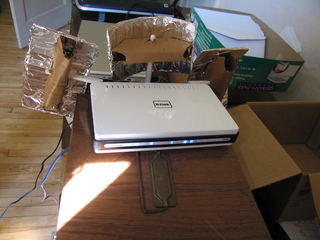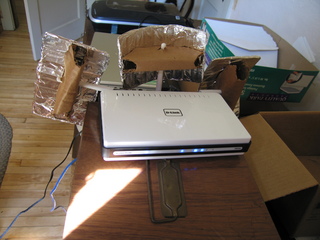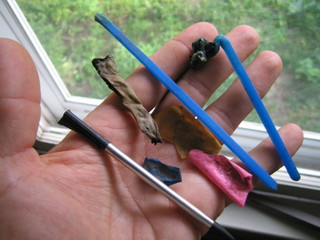|
|
Hey All,
It’s been a very busy couple of weeks:
On July 27th I spoke at the Garden Club of America Zone 11 Annual Meeting in Lake Geneva. I was there for less than 48hrs, but I still had a wonderful time. I received the GCA’s Fellowship in Ecological Restoration to support my Master’s project, which is why I was asked to attend at all. I was pretty nervous about the speech, but in the end I think it went pretty well. They were a great audience and after this experience I feel much more confident about public speaking.
After I gave my talk, I was able go see the GCA flower show, which was really interesting. There were some pretty cool displays. I especially like the hats made of flowers, the miniatures, and the photography. They also had these challenge events where everyone was given the same supplies and theme and had a fixed amount of time to create a display. The GCA has some very creative members.
That evening we were given a tour of the lake on a boat called the Louise, where we had h’ors d’oeuvres and cocktails. The boat dropped us off at a GCA member’s house for dinner. It was a lot of fun!
The next day I got to hear Kathryn Kennedy, the president of the Center for Plant Conservation, speak. She gave an excellent talk about endangered species and the challenges we face in protecting these high-risk plants in the coming decades. I was totally revved afterwords, so she did her job.
Pictures from the GCA trip:



After I got back from Wisconsin, I had to turn around and finish working on the poster for the ESA conference. After much work, and help from Stuart, Amy, and Josh, I finally finished the poster.
I drove to St. Cloud to print both the FNC poster and Allegra’s poster, and then on Sunday Stuart and I went to the ESA conference in Pittsburgh. Mimi, the REU intern from last year, was able to join us for the conference on Monday. It was great to see her again. She’s currently working at Frick park as a Outdoorsy type summer camp counselor. She’ll be leaving in September to teach English in Guadalupe. Should be fun!
Mimi and I got a lot of great feedback on our poster during the poster session, and I’m pretty confident that with everyone’s help we can write an interesting paper.
The poster is entitled: Interspecific Co-flowering Prairie Plants Compete for Pollinators.
Here’s the abstract we submitted:
Background/Question/Methods:
Pollen limitation is prevalent in many species, and can be especially worrisome in fragmented landscapes. Reproduction in the purple coneflower, Echinacea angustifolia (Asteraceae), which grows in small remnant patches of tallgrass prairie in North America, is pollen limited, but not pollinator limited.
Pollen limitation of Echinacea increases with isolation of individual plants, decreases with size of population, and has a strong negative impact on reproduction. However, pollinator visitation does not explain the reduced reproductive success. Wagenius and Lyon (2010), found that plants in the densest and largest populations of Echinacea receive fewer pollinator visits yet have greater reproductive success than plants in small isolated populations, which receive more visits but have decreased reproductive success. Among the many prairie plants pollinated by native solitary generalist bees, interspecific co-flowering plants may either enhance pollination by attracting more pollinators, or reduce reproductive success through competition or interference with compatible pollen receipt (Feldman 2008, Mitchell et al 2009).
Results/Conclusions
We investigated the community of co-flowering species surrounding a plant (floral neighborhood). We measured the effect of floral neighborhood on pollinator visitation, pollinator diversity, and pollination success of Echinacea. We randomly selected 8 focal plants at each of 10 remnant prairie sites in Douglas Co., Minnesota and observed and collected insect pollinators four times during summer 2009. We also identified and counted inflorescences of nearby co-flowering species.
We found strong evidence that floral neighborhood composition influences pollinator visitation of Echinacea. Forty species co-flowered with Echinacea, nine of which are invasive. Co-flowering species richness ranged from 14 in the largest remnant to five in the smallest. Alfalfa, Medicago sativa (Fabaceae), the most abundant exotic co-flowering species, occurred at seven of the sites, while leadplant, Amorpha canescens (Fabaceae), the most abundant native species (besides Echinacea), was only found at three remnants. The presence of alfalfa within a focal plant’s floral neighborhood increased the probability of a pollinator visit by 7% (according to a glm with binomial response p<0.03). In contrast, native leadplant decreased pollinator visits by 9% (p<0.02). There is no evidence that alfalfa, leadplant, and Echinacea interact in their effect on pollinator visits. We also collected pollen from Echinacea insect pollinators and flower parts to see if patterns in floral neighborhood composition and pollinator visitation are reflected in pollen loads on pollinators or stigmas.
Here’s a small copy of the actual poster:
Gallagher_ESA_Poster_Final_sm.pdf
The main conclusions were:
Neither the community of co-flowering species nor the presence of non-native plants was associated with variation in pollinator visitation.
Co-flowering species diversity was a predictor of pollinator visitation only late in the flowering season. Floral communities, as quantified by NMS analysis, were associated with the presence of non-natives all season long and overall diversity only in the early season. NMS characterizations of species co-flowering with Echinacea did not predict pollinator visitation at any time.
Echinacea neighborhoods with Amorpha, a native, had lower pollinator visitation, while the neighborhoods with Medicago, a non-native, had higher pollinator visitation.
We found no compelling evidence that interspecific co-flowering species influence pollinator visitation to Echinacea in small prairie remnants. The previously observed high pollinator visitation and concurrent pollen limitation might result from low quality of pollinator visits, an hypothesis we are now investigating.
Here’s a picture of Mimi and I in front of the poster at the conference:

Now that I’m back in Kensington, it’s time to get back to my master’s project. The work is never done! This week I’m hoping to do seedling checks for my three plots. Hope I can count on lots of help getting it done!
-Kate
Parent’s Visit and the 4th:
On July 1st, my parents came to visit us up in MN. They joined the group for burgers at the K-town bar on Thursday night. On Friday, we explored (Mom, Dad and I) Fergus Falls, which has a surprising amount going on for such a small town. We found a great Art gallery, with some really cool pictures of MN from the air, and visited Phelps Mill, an historic site. We ate dinner a yummy Italian restaurant, recommended by Ian (thanks Ian!) and found a wonderful little cafe for dessert, Cafe 116. Sunday, the 4th was spend with the Wagenius’ at Elk Lake, which was a delight. All in all, the parents had a great visit. Below are some of the pictures Mom took:





Orchid Trip:
On Monday, July 5th Team Echinacea (or some of us at least), helped Gretel find and count the endangered Great Plains White Fringed Orchid. I did a mini-report on this plant for my Plant Evolution and Diversity class, so to find out more about the plant see Gallagher_PoW_16April2010.pdf .
It was really fun to visit to a very different type of prairie (wet vs. mesic), and spend a day doing something totally different. Unfortunately, this year the mosquitoes were especially bad, which kind of put a damper on the day. Fortunately, the team ended up have a lovely dinner at Cafe 116, and I think I can safely say that I had some of the best pulled pork in MN.
Some pictures of the orchid trip:


Planting My MS Project Sites:
On Wednesday, we finally began planting the three sites for my Masters Project. It was a huge group effort, and I can’t thank everyone enough for helping out. Here are some pictures of the effort:







All Finished! WOOT!
Bowling:
Friday night Team Echinacea went bowling. While I wouldn’t say we were horrible, I also wouldn’t recommend that any of us, except maybe Laura, join a bowling league. The rest of us were inconsistent to say the least, although I think everyone got a least one strike, so there is hope. That said, I think any bowling league would be a bit… surprised by some of the techniques Lauren employed. Bowling left handed, and pushing the ball under Hillary’s legs both seemed particularly successful strategies for her. Personally, I found left-handed bowling to be a complete disaster. Pictures of the fun:
Teamwork gets the job done:


The Under-the-Leg Technique… not so successful, but kinda fun to watch:

Sometimes the fates were against us… for looong stretches of time:

But we had fun anyway:





Et Voila! We’re back up to date. ‘Till next time!
-Kate
We had a pretty eventful weekend with the Runestone festival going on in K-town! We checked it out Friday night and saw fireworks, had a pancake breakfast Sat morning (all except Ian), talked to the locals, and had fun sniffing candles at the crafts fair. Then on Sunday we watched the parade and biked to the lake in Hoffman!


-Katie
Hello,
I made it to the fourth day of school without taking my class outside to the nearest prairie remnant (the hill above the river in town)
It took very little time for them to learn to recognize ech. deadheads and rosa arkansana (rose hips). Some were even able to find basal ech. plants. (without offering 6-packs of pop as bait)
 
So, for another update from the luxurious Hjelm house, which is THE place to be this summer. We recently had the wireless router in the basement stop allowing people to log on to the network wirelessly, so Stuart ordered a new wireless router, along with an 8 port switch so that we can have more than 3 computers connected at the same time. They got here yesterday, and I took them downstairs to set up.
The entire process of setting up took about 20 minutes, and everything worked like a charm. I hooked the cable modem up to the router, set up the router DHCP (Dynamic Host Configuration Protocol, used to assign IP addresses to computers on the network), and hooked the router up to the switch, after mounting them on the wall. However, I wanted to see if we could get wireless access in the Wagenius house, about 60 metres away.
Setting the router up near the window in the basement did not work, so I moved the router upstairs. After a couple hours trying various spots, it was placed in Stuart’s office, which offered easy access to an Ethernet jack, as well as a convenient window.
In order to enable both the wireless router and the wall jacks, while preserving the network, I had to disable DHCP on the new wireless router, and place the old one downstairs to act as a DHCP distributing thingy for the house. It took me a couple hours to figure this out as well, since I thought the wireless router could perform the same function through the switch.
Anyway, to cut a long boring story short, the new router upstairs fell just short of the Wagenius house computer’s range, so using the excellent resources of (Lifehack.com, I made three parabolic reflectors out of cardboard and tin foil to boost the signal. They worked like a charm! They are originally the idea of this site: http://www.freeantennas.com/projects/template/, and I got the template to build the antennas from here: http://www.freeantennas.com/projects/template2/index.html.
Some pictures of the new wireless router:


I found a few things besides Echinacea plants, while searching for plants that may have died in the common garden. I found a fossil shell. I gave it to Per and he held on to it for a while but dropped it. Someone else will find it! I found a stylus (for a handspring visor). It’s probably Gretel’s; she lost hers earlier this year. I found a snake skin with an intact top of head–the eyes were transparent-cool! Per gave to Hattie, I think. I found a mouse in a mouse nest (right on top of dead Echinacea leaves from last year). The mouse bounded away. Also, Ruth called while I was searching to say that she had just found the serial cord for the survey station data collector that we couldn’t find–we had been looking for that for a few days. Wahoo! Finally, I emptied my pockets of litter that I had picked up: three pieces of flagging, one melted plastic plug label, and 2 blue plastic cocktail stirrers.

Stuff from Stuart’s pocket: stylus (1), flagging bits (3),
melted plastic plug label (1), blue plastic cocktail stirrers (2)
We are making great progress on annual measurements of plant in the common garden. On Monday we finished measuring all plants (~10000). On Tuesday we finished placing staples at all locations where plants died overwinter in 2007-2008 (>700). Today we made a huge dent in “rechecks.”
Rechecking is when we revisit all the locations where we recorded a “can’t find” and left a flag while measuring. We placed about 1500 flags. About 700 of those “can’t finds” were stapled this year. So, we just verified that staples were in the correct locations and pulled flags. Some locations had staples from previous years that a measurer didn’t find. We pulled flags there too. Then there were the plants that were alive last year. We rechecked those and found quite a few plants. Each time someone found one, they yelled “wahoo” and the rest of us responded with a whoop and a holler.
Shucks, it was fun!! Actually I was burned out by the end. Next year we should plan two 2h sessions instead of one 4h session.
I went on a fantastic bike ride yesterday and saw a large prairie restoration on the east side of county road 7 between Moe Hall Rd SW and Tower Hill Rd SW. I also saw a population of Ratibida and Desmodium on the west side of County Rd 15 between MN-27 and Tower Hill Rd SW. Sorry I couldn’t be more specific with my directions but if you bike or drive those sections of road you will definitely find the spots.
Warren ventured into the Hjelm house again today. Gretel and Hattie & I tried to urge him to leave. Warren tried to hide, but Roxy found him and escorted him out.
We went out for a family hike this afternoon and near a nice little wetland found a patch of Teucrium that’s still flowering. Details available upon request!
Hello all!
This is Daniel with another update on what team Echinacea has been up to in the past week. Allegra, Stuart and I have become what I like to call the “Staffanson Crew”, and we are responsible for doing phenology at Staffanson every other day. Today we got the time down to about 2 hours and 20 minutes, from 3.5 hours originally. The process was made a lot more efficient by splitting up sections and giving everyone a separate checklist. Of course, the temperature was almost 40 below, so that was slightly unpleasant. Add the wind and the fact that I was only wearing 2 thin layers, and you have a recipe for hypothermia. However, I persevered, thinking of my avocado and sausage sandwiches waiting for me at the Hjelm house.
The pollinator project has been going along well, with Kate, Amanda and Mimi hard at working sorting out the oodles of data they have obtained. Greg and Kate are based in what I like to call the “Basement of Oppression”, working on making slides and taking pollen photos. Amanda is pinning bees and creating agar slides with the different pollen loads, then photographing them. Finally, Mimi is working on sorting out all the different types of flowering plants found at each sites. Meanwhile, who knows what Amy and Caroline are up to? Reviewing papers and entering data most likely, tasks far beyond the comprehension of we undergrads.
In my case, I have been searching for the different plants in the common garden that we identified as having spittle. I spent all afternoon in the common garden yesterday, and it was a ton of fun, especially since I saw so many interesting things. The most interesting thing of all though, was watching a bunch of ants pick up and move an aphid that was sitting on a leaf. The aphid may have been dead or alive (alive would be so cool!), but since I was silly enough to forget my camera, I guess I’ll never know.
Most of the plants I looked at have aphids on them, but I will need to wait until I finish looking at them all before I draw any conclusions. Meanwhile, our transect searches are done until next week. However, I have found aphids on many of the plants I saw during our Staffanson searches, so I remain hopeful!
|
|


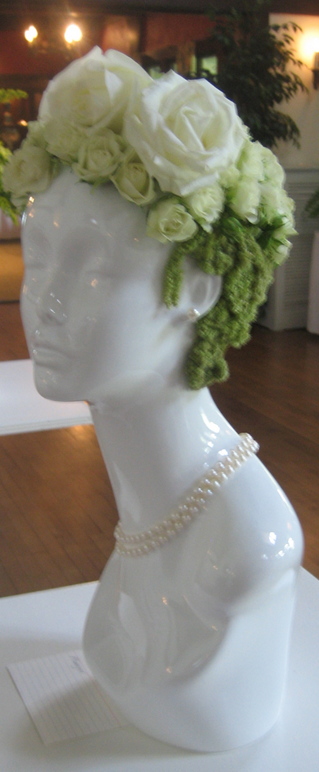
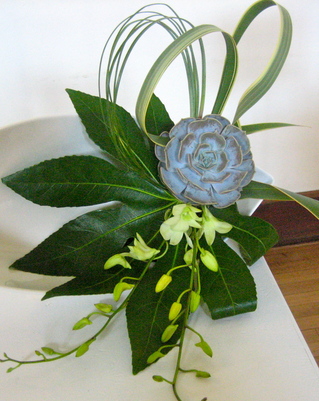
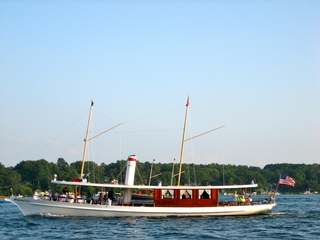

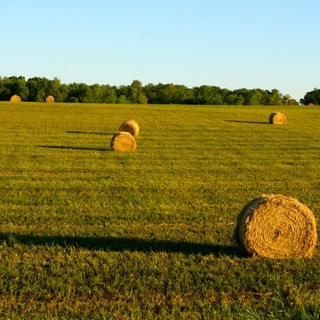
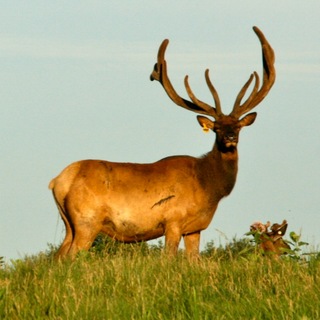

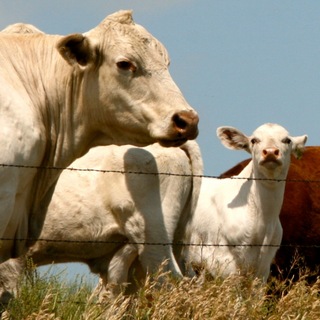
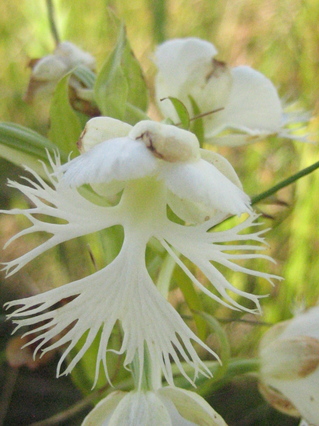
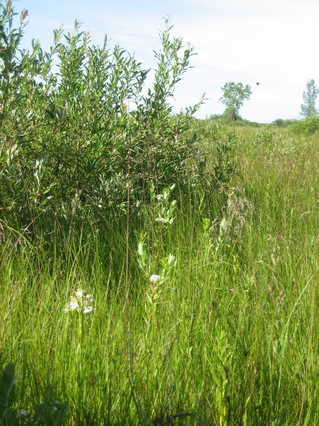
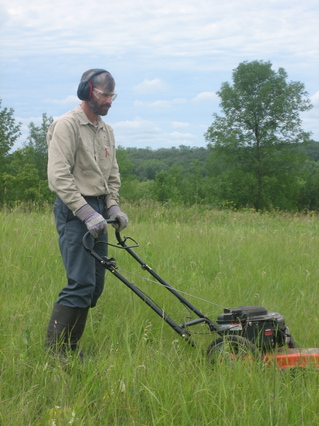
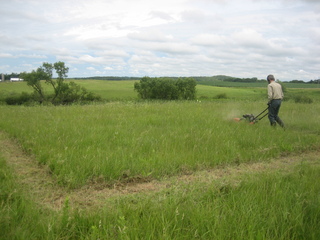

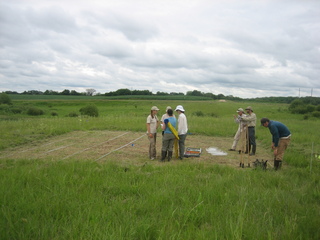
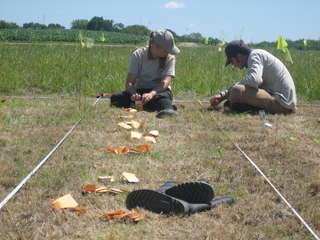

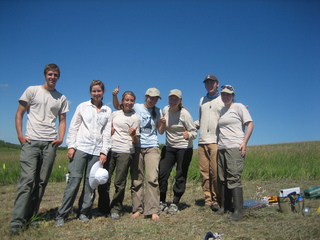

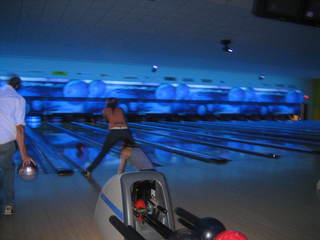
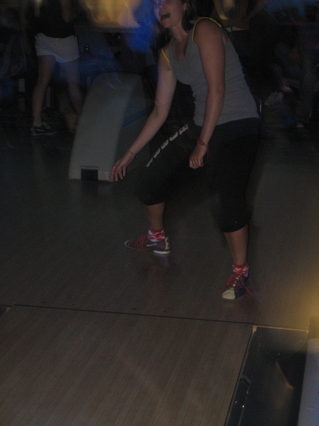
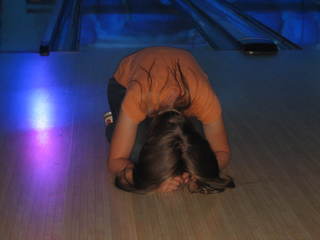
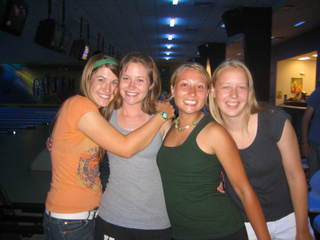
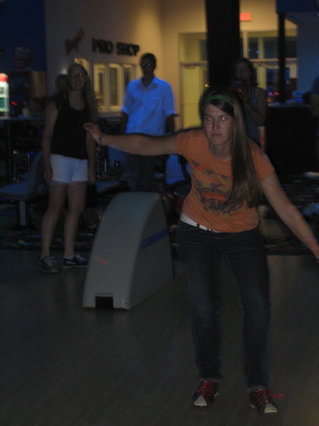
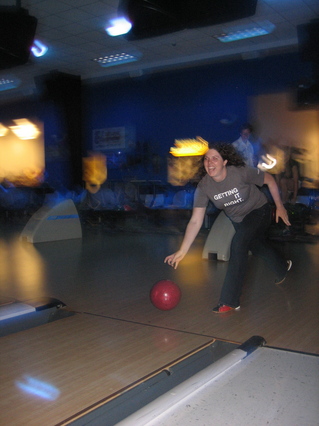
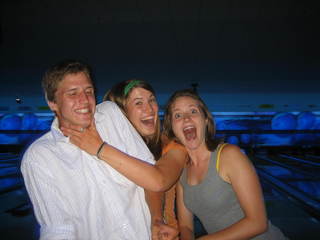
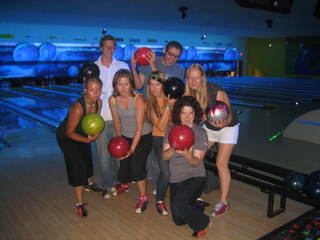
-thumb-320x240-45742.jpg)
-thumb-320x240-45745.jpg)


